|
Snakebite and rescue breathing - January 2023
Snakebite deaths are quite rare in South Africa with between 10-12 fatalities being reported annually. These fatalities are largely because of Black Mamba and Cape Cobra bites – two snakes with fast-acting neurotoxic venom that may quickly affect breathing.
The Green Mamba, Rinkhals and other non-spitting cobras have a more complex mixture of cytotoxins and neurotoxins and their venom is not near as fast-acting, giving victims far more time to get to a medical facility.
As for snakes like the Puff Adder and Mozambique Spitting Cobra, the venom is largely cytotoxic causing pain, progressive swelling, blistering and potentially tissue damage. Fatalities are rare but small children are at risk. Sadly, these bites often result in morbidity with patients needing corrective surgery after serious bites. The early administration of antivenom in such bites could have a positive outcome on morbidity.
|
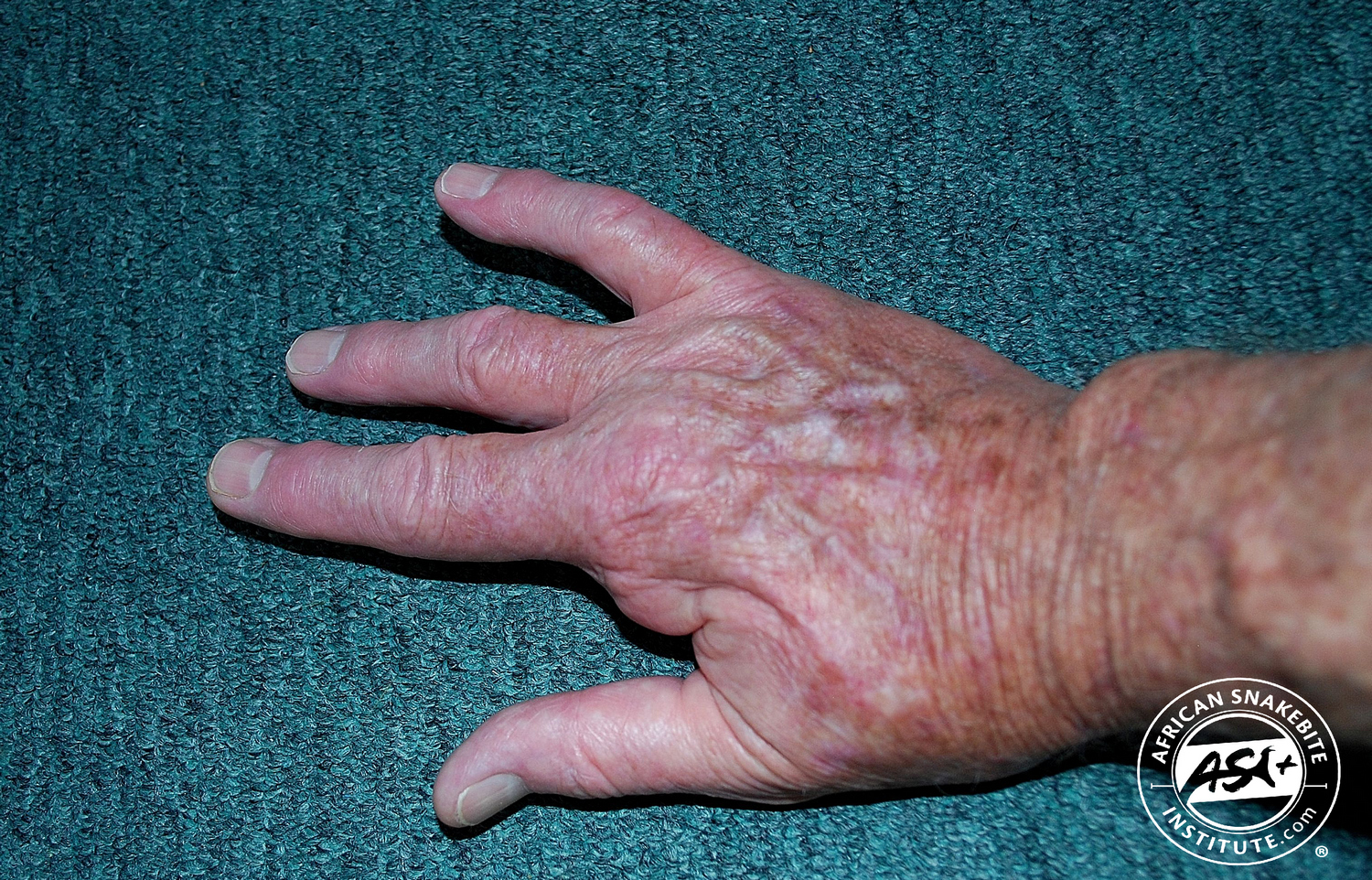 |
|
Morbidity following a Puff Adder bite - photo Steve Spawls.
|
|
|
|
ASI JM175 Collapsible Snake Tong
NEW IN STOCK – ideal for travellers - the all new the ASI JM175 Collapsible Snake Tong collapses down to 118 cm and extends to 175 cm. Featuring our unique design which doesn’t require any pins to hold the trigger in place.
Price R1495.00
|
| Order here |
|
|
|
|
|
A severe bite from a Black Mamba or Cape Cobra usually results in rapid symptoms with victims mentioning a metallic taste in the mouth followed by progressive weakness – pins and needles in the lips, the tongue getting paralyzed which affects swallowing and speech, ptosis, dilated pupils and difficulty with breathing. It is the lack of oxygen, once the chest rises stop and the lungs do not get air, that is the biggest problem The heart functions well but once breathing is compromised, the blood that is pumped to the brain has no oxygen and if the brain does not receive sufficient oxygenated blood, the victim could be brain dead within minutes.
In such bites, while the victim is being transported to a trauma unit, it is vitally important to provide rescue breaths if needed. CPR (cardiopulmonary resuscitation), which consists of thirty chest compressions and two rescue breaths at a rate of around 120 chest compressions per minute, is not necessary as the heart still functions – and CPR is exhausting! One can resort to mouth-to-mouth resuscitation but, unless it is a family member or very good friend, a barrier device is essential. It will prevent bodily fluids from the victim entering your mouth.
|
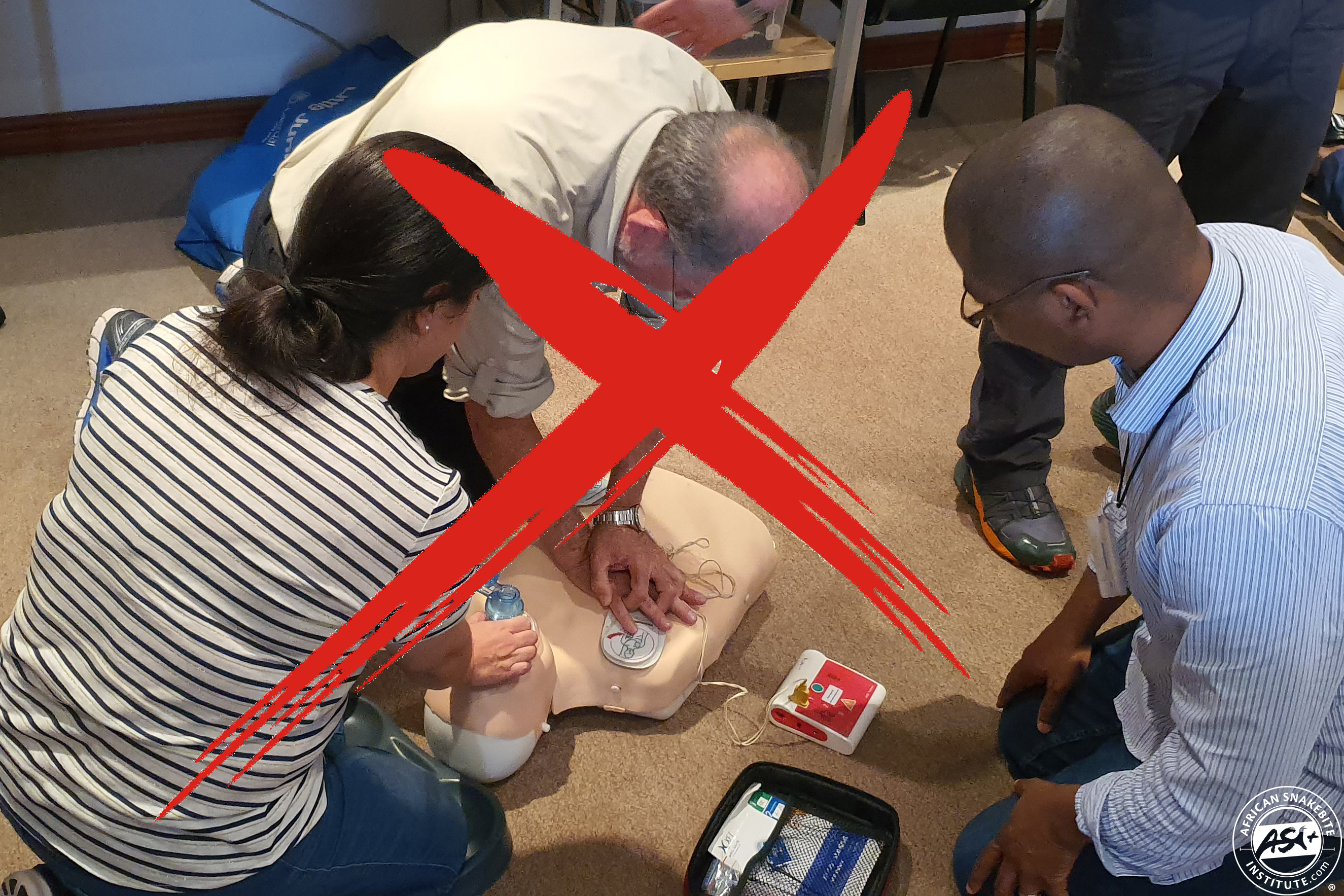 |
|
CPR is not necessary for snakebites as the heart still functions.
|
|
|
|
ASI PRO Snake Hook
The lightweight ASI PRO Hook weighs only 195 grams. With an aluminium shaft and stainless steel hook this lightweight hook is a great addition to any snake removal kit. Tested to lift up to 3 kg.
Price R595.00 each
|
| Order here |
|
|
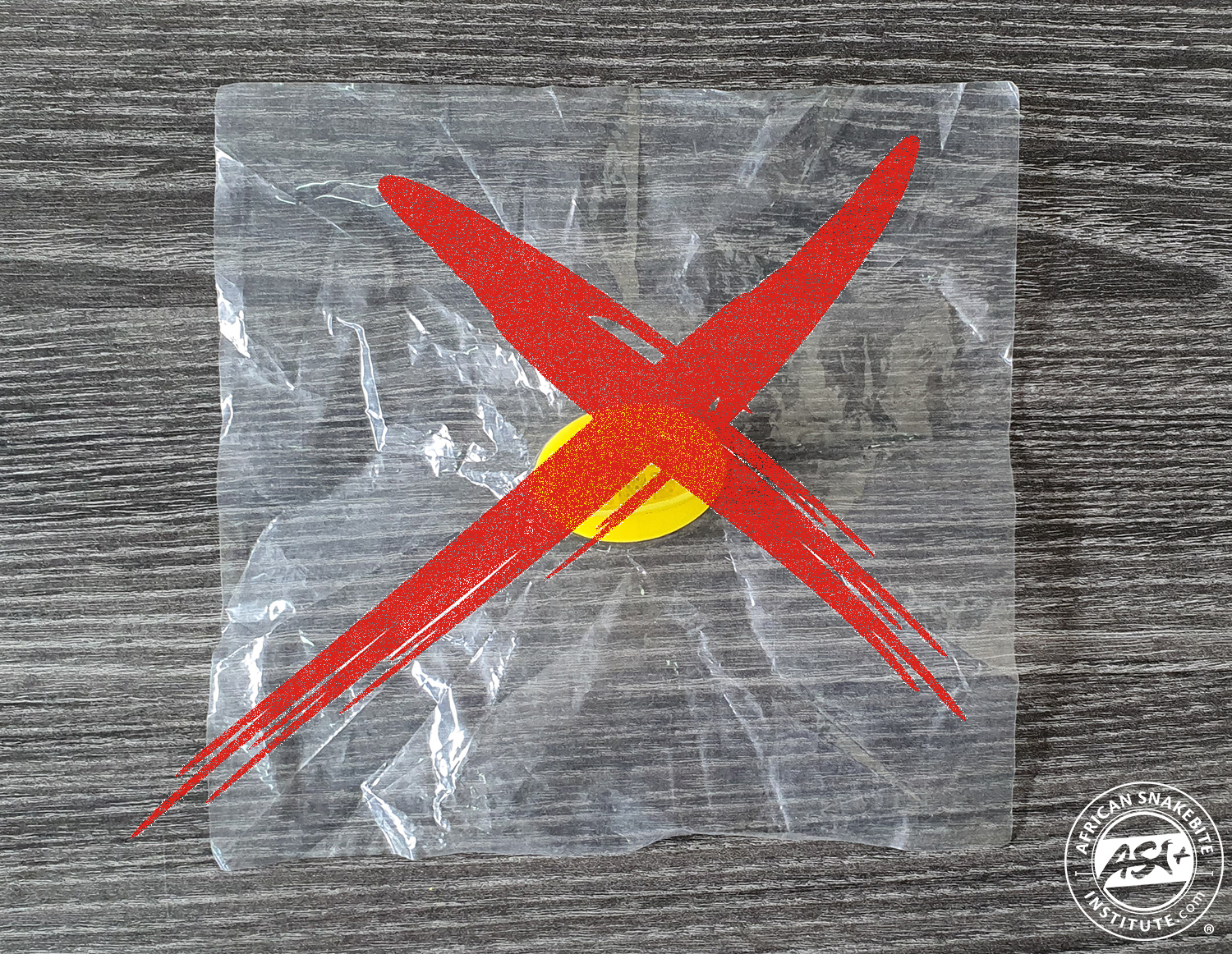 |
|
Avoid cheap face masks - they do not provide adequate protection.
|
|
Face masks are often included in first aid kits but are difficult to use effectively and do not provide adequate protection – if you suck onto one of these devices you can still get air through it.
A far better option is a pocket mask. They are inexpensive (just over R100.00), can be sterilized and re-used, and ensure a good seal over the mouth and nose. If turned upside-down they can even be used on small children.
|
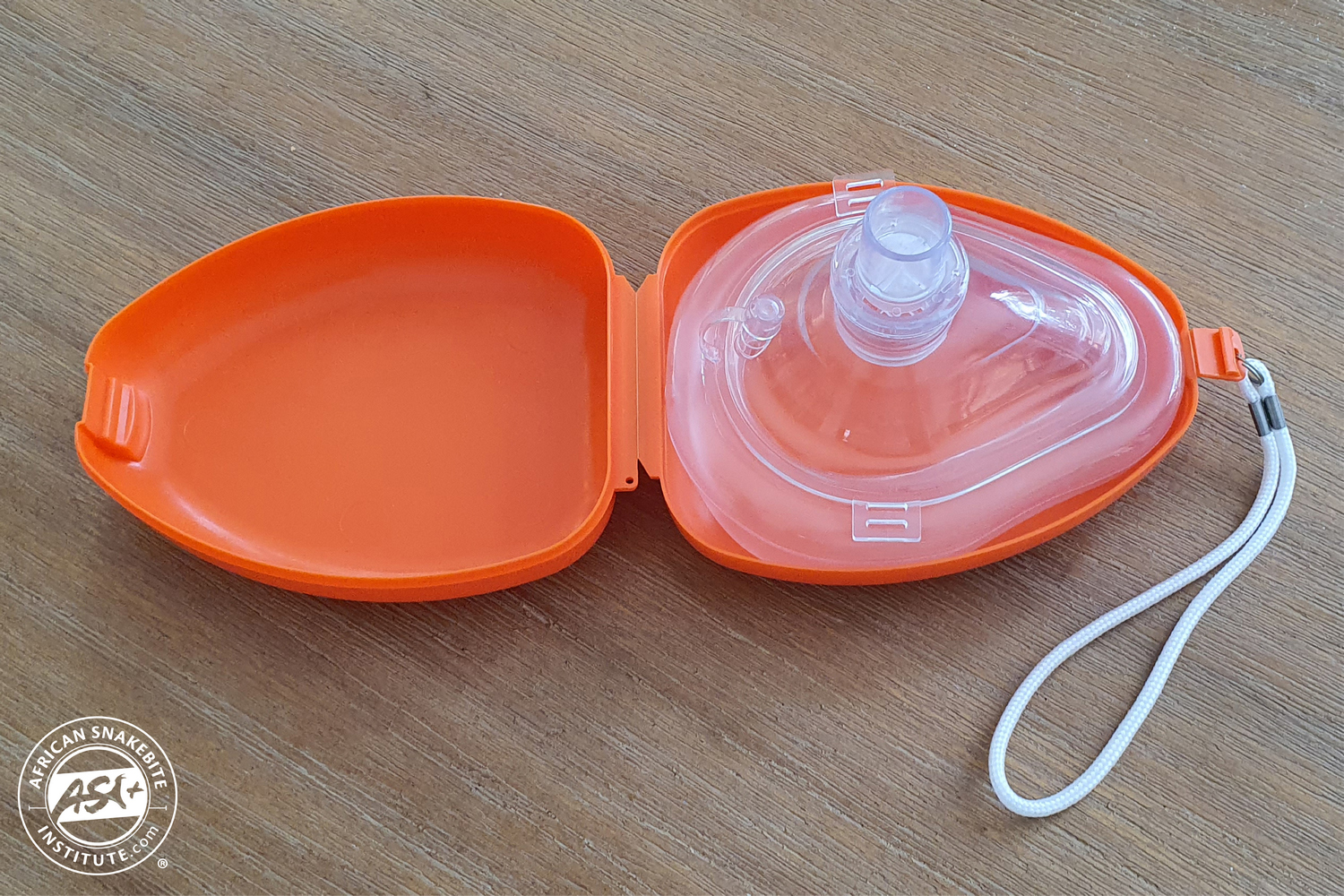 |
|
|
|
Make sure that the head is tilted backwards to open the airway, check that nothing is blocking the airway and bear in mind that patients may have a build-up of saliva as the tongue no longer functions properly. This may necessitate the removal of excess saliva with a hand pump.
In adults we give one breath every six seconds, in children one every five seconds and babies one breath every four seconds. It is a slow, gentle breath given over a second and just enough to ensure a chest rise. The air that we inhale has around 21% oxygen and we utilise about 5% of it, therefor giving the patient around 16% oxygen. Continue to provide rescue breaths until you reach a medical center. Also bear in mind that ambulances are staffed by paramedics, and they have far better training in providing recue breaths than most members of the public.
|
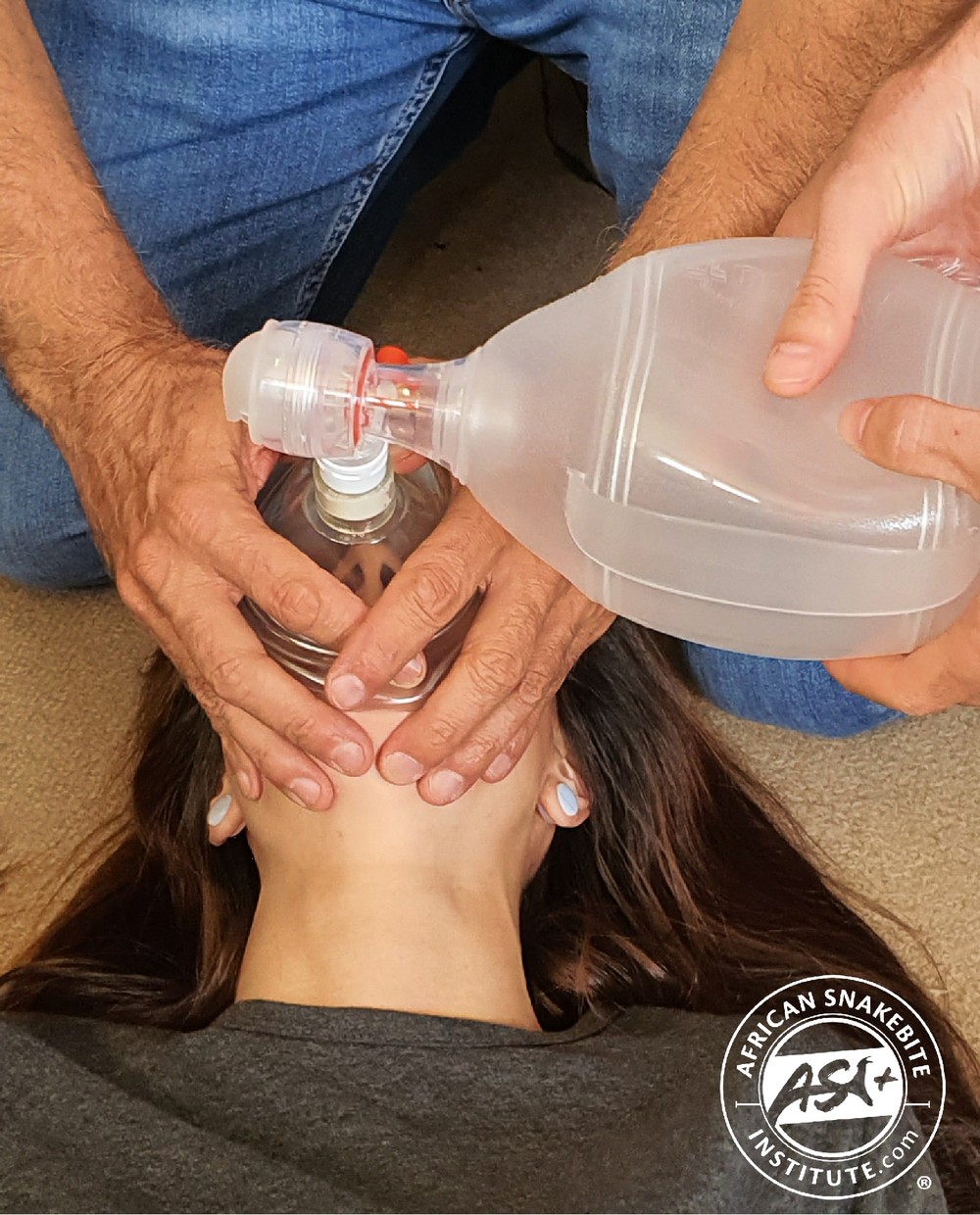 |
|
Make sure that the head is tilted backwards to open the airway.
|
|
|
|
The Dangerous Snakes of Africa
The Dangerous Snakes of Africa is an indispensable guide to these reptiles. It covers all 137 dangerous snake species in Africa, along with another 70 species that are easily confused with them. This comprehensive book is an essential tool for all naturalists, conservationists, educators, field workers and medical personnel throughout Africa.
Price R795.00 each
|
| Order here |
|
|
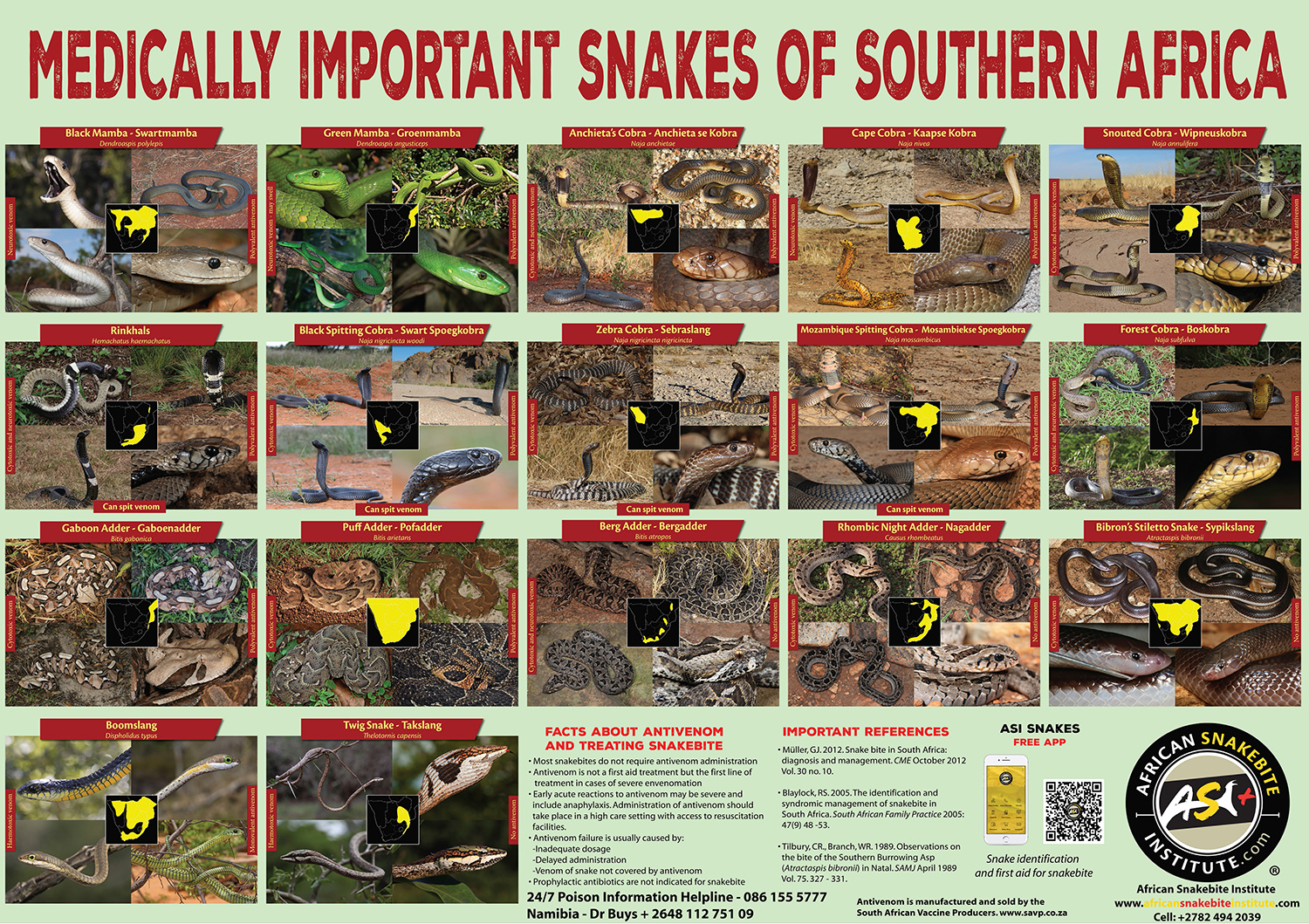 |
|
When providing rescue breaths, a bag valve mask reserve (BVM) is a far better choice. It is far more effective, less tiring and, if used correctly, highly effective. Doctors and paramedics are trained in the use of a BVM. Should you wish to be trained in the proper use of a BVM, consider doing a Basic Life Support Course (check out https://resus.co.za).
To summarize, snakebite fatalities are largely because of a lack of breathing and in serious bites victims could die within about one to seven hours, but in severe bites, especially where small children are involved, it could occur well within one hour. Your immediate action should be to get the victim to the closest medical center with a trauma unit and to provide rescue breaths if required. Meeting an ambulance halfway to hospital could be greatly beneficial as a paramedic will provide far better rescue breaths than any member of the public.
Keep the following private ambulance services numbers on speed dial or if you have a preferred emergency number for your area, make use of that.
Netcare 911- 082 911
ER24 – 084 124
|
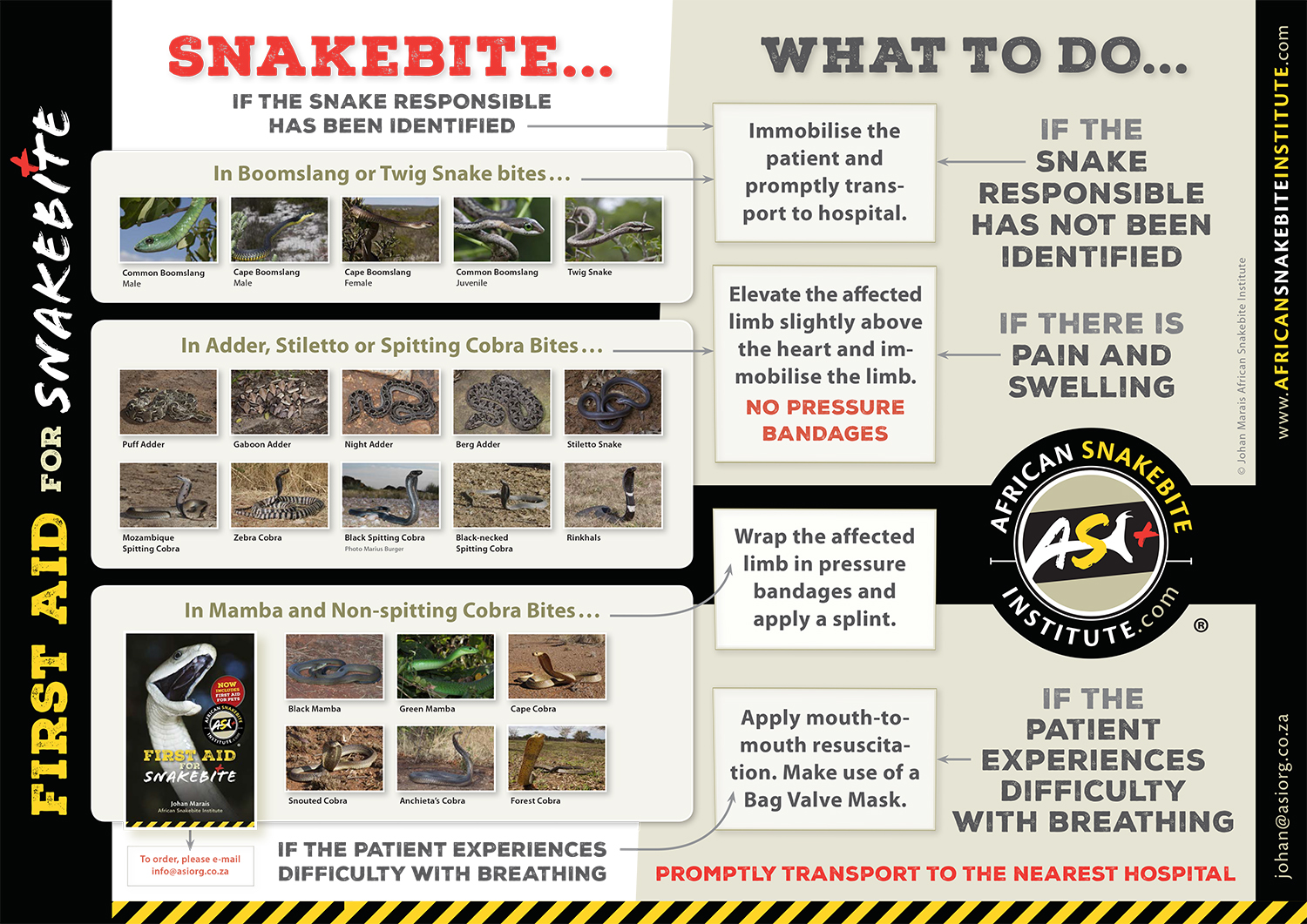 |
|
|
|
Course refresher special. Take advantage of our 25% dicscount on our popular public Snake Awareness, First aid for Snakebite and Venomous Snake Handling course - please email Katja on courses@asiorg.co.za for details.
|
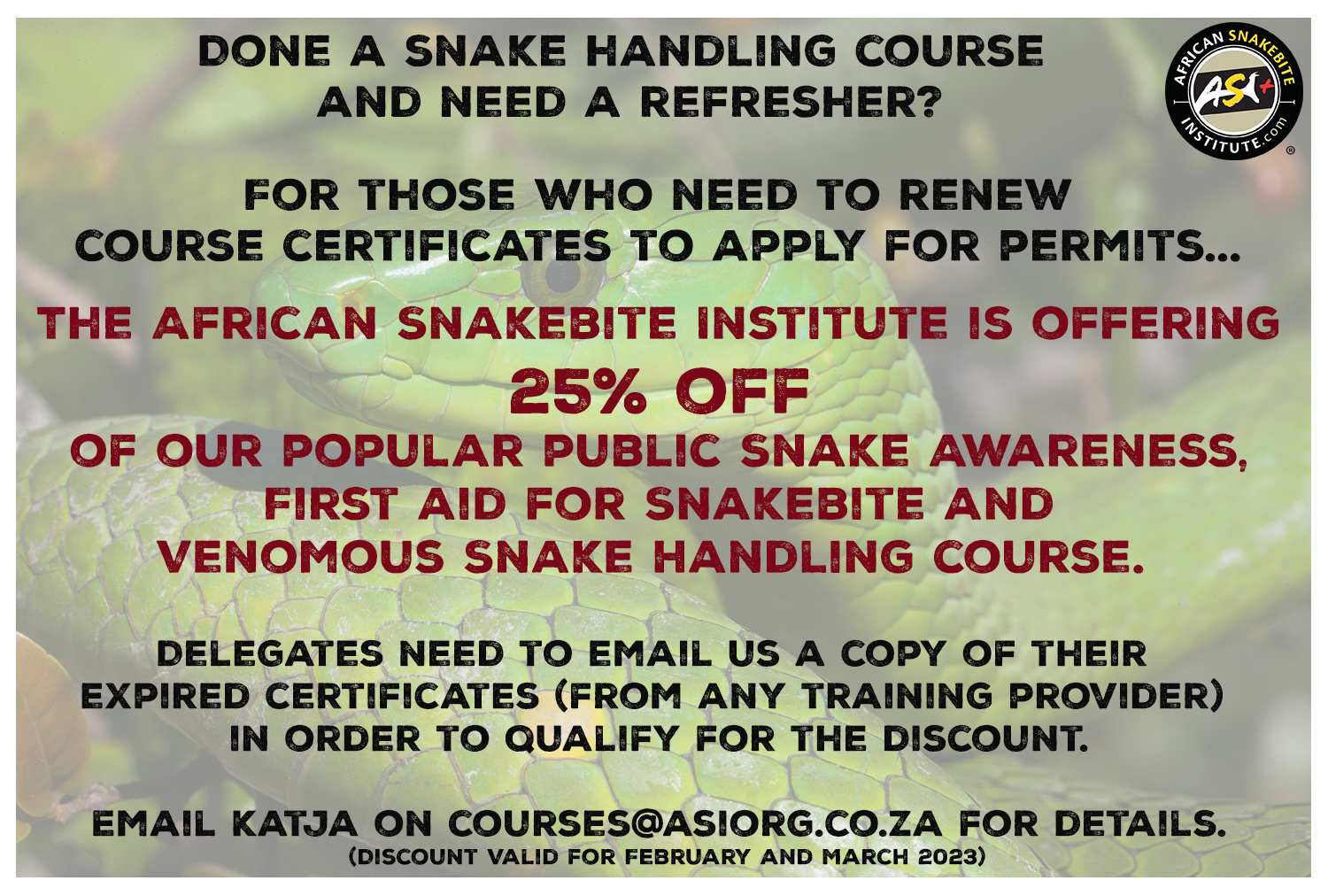 |
|
|
 |
|
|
|
|